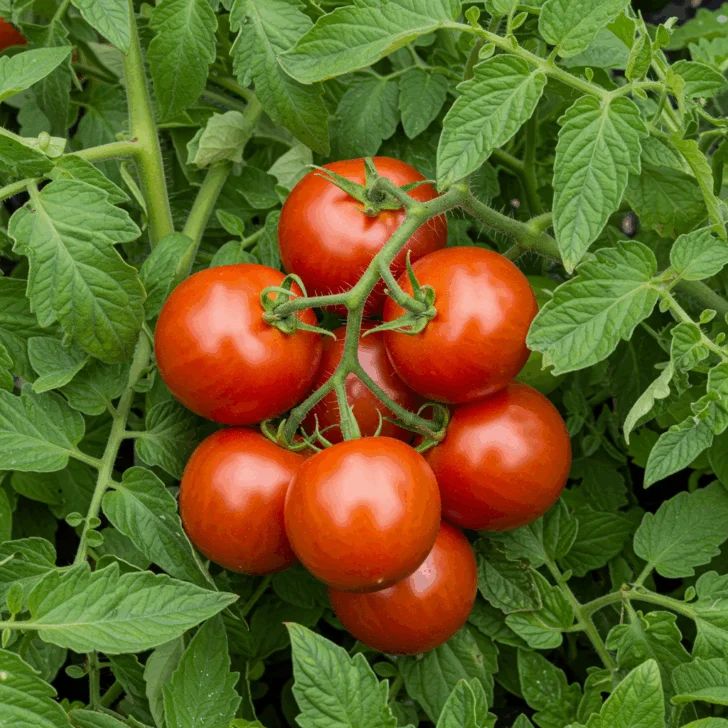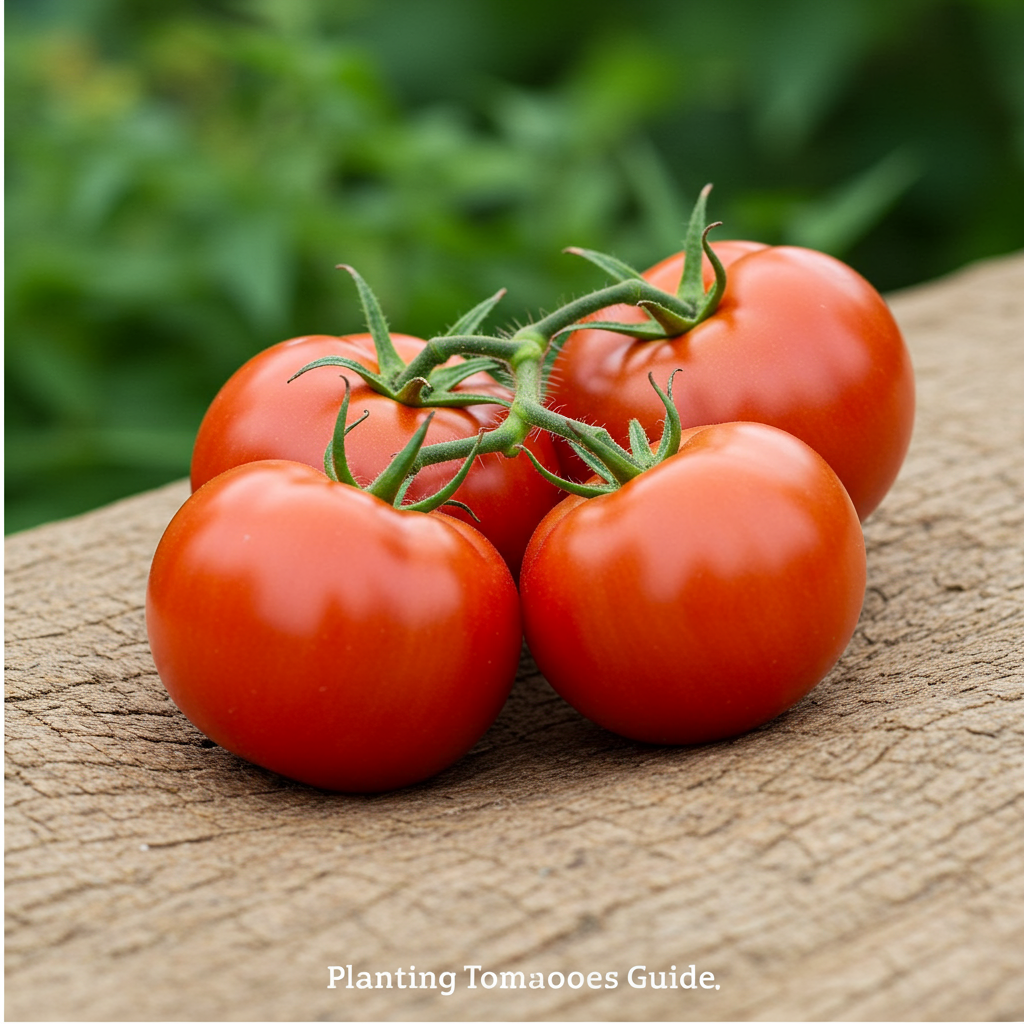Knowing when to plant tomatoes in Idaho is crucial for a successful harvest. This guide provides detailed information about planting times, frost dates, ideal growing conditions, and tips for growing thriving tomato plants in Idaho’s unique climate.

Introduction: Idaho’s Tomato Growing Challenge
Idaho’s climate, with its short growing season and variable temperatures, presents a unique challenge for tomato gardeners. Successfully growing tomatoes in Idaho requires careful planning and understanding of the specific needs of these heat-loving plants. This guide will equip you with the knowledge you need to confidently plant and nurture your tomatoes, from seed to harvest.
Understanding Idaho’s Growing Zones
Idaho spans several USDA Plant Hardiness Zones, ranging from 4a to 7b. This means the last spring frost and the first fall frost vary considerably across the state. Knowing your specific zone is critical for determining the optimal planting time for tomatoes. You can easily find your zone by using online resources like the USDA Plant Hardiness Zone Map. ([[Link to USDA Plant Hardiness Zone Map]])
When to Start Tomato Seeds Indoors
Starting tomato seeds indoors is highly recommended for Idaho gardeners due to the short growing season. This gives your tomato plants a head start, allowing you to transplant healthy, established seedlings outdoors once the weather is warm enough.
- Early Varieties: Start seeds 6-8 weeks before the last expected frost.
- Main Season Varieties: Start seeds 4-6 weeks before the last expected frost.
Calculating Your Last Frost Date
The last frost date is the average date of the last killing frost in spring. It’s important to remember that this is an average, and actual frost dates can fluctuate. For Idaho, the last frost date generally falls between mid-May and early June, depending on your location and elevation. Local agricultural extension offices ([[Link to a relevant Idaho agricultural extension office]]) and gardening centers are excellent resources for precise frost dates in your specific area.
When to Plant Tomatoes Outdoors in Idaho
Tomatoes should only be planted outdoors after the danger of frost has passed and the soil has warmed up to at least 60°F (15°C). For most of Idaho, this typically means late May or early June. However, in higher-elevation areas or colder microclimates, planting may need to be delayed until late June or even early July.
Choosing the Right Tomato Varieties for Idaho
Selecting tomato varieties suited to Idaho’s growing season is key to a bountiful harvest. Opt for varieties with shorter maturation times (days to maturity), particularly if your growing season is shorter.
- Early Season Varieties: These mature in 50-65 days and are ideal for cooler climates. Examples include ‘Early Girl’, ‘Stupice’, and ‘Alaska’.
- Mid-Season Varieties: These mature in 65-80 days and are a good choice for most of Idaho. Examples include ‘Better Big Beef’, ‘Celebrity’, and ‘Roma’.
- Late-Season Varieties: These require a long, warm growing season (80+ days) and may not fully mature in some areas of Idaho without extending the season using techniques like season extenders. Examples include ‘Brandywine’, ‘Cherokee Purple’, and ‘Mortgage Lifter’.
Tips for Planting Tomatoes in Idaho
- Soil Preparation: Tomatoes thrive in well-drained soil rich in organic matter. Amend your soil with compost or aged manure.
- Sun Exposure: Choose a sunny location that receives at least 6-8 hours of direct sunlight per day.
- Hardening Off Seedlings: Gradually acclimate your seedlings to outdoor conditions before transplanting them into the garden to avoid transplant shock.
- Watering: Water deeply and consistently, especially during dry periods.
- Supporting Your Plants: Use stakes, cages, or trellises to support the growing plants and prevent fruit from touching the ground.
- Protecting from Pests and Diseases: Be vigilant for common tomato pests and diseases, such as blight, and take preventative measures.
Extending the Growing Season
Protecting your tomato plants from frost can extend the growing season on both ends.
- Row Covers: Use floating row covers to protect young plants from late spring frosts.
- Wall O’ Water: These water-filled plastic tubes provide insulation against cooler temperatures.
- Cold Frames or Greenhouses: These structures create a more controlled environment, allowing you to start plants earlier and extend the harvest into the fall.
Harvesting Your Tomatoes
Knowing when to harvest your tomatoes is just as important as knowing when to plant them. Harvest when tomatoes are fully colored and slightly soft to the touch.
FAQs: When to Plant Tomatoes in Idaho
- Q: Can I plant tomatoes directly in the ground in Idaho?
- A: While possible, starting seeds indoors is generally recommended for Idaho’s shorter growing season.
- Q: What should I do if a late frost is predicted after I’ve planted my tomatoes?
- A: Cover your plants with row covers, blankets, or other protective materials to insulate them from the cold.
- Q: When should I start fertilizing my tomato plants?
- A: Start fertilizing about two weeks after transplanting, using a balanced fertilizer.
- Q: How much water do my tomato plants need?
- A: Tomatoes typically need 1-2 inches of water per week, including rainfall.
- Q: How can I prevent blossom-end rot on my tomatoes?
- A: Consistent watering and adequate calcium in the soil can help prevent blossom-end rot.
Conclusion: Growing Tomatoes in Idaho
Growing tomatoes in Idaho can be a rewarding experience with proper planning and care. Following the guidelines outlined in this guide will help you maximize your yield and enjoy delicious, homegrown tomatoes throughout the season. Don’t be discouraged by Idaho’s unique climate; with a bit of knowledge and effort, you can have a thriving tomato garden. Remember to experiment with different varieties and techniques to find what works best in your specific location. Happy gardening!

